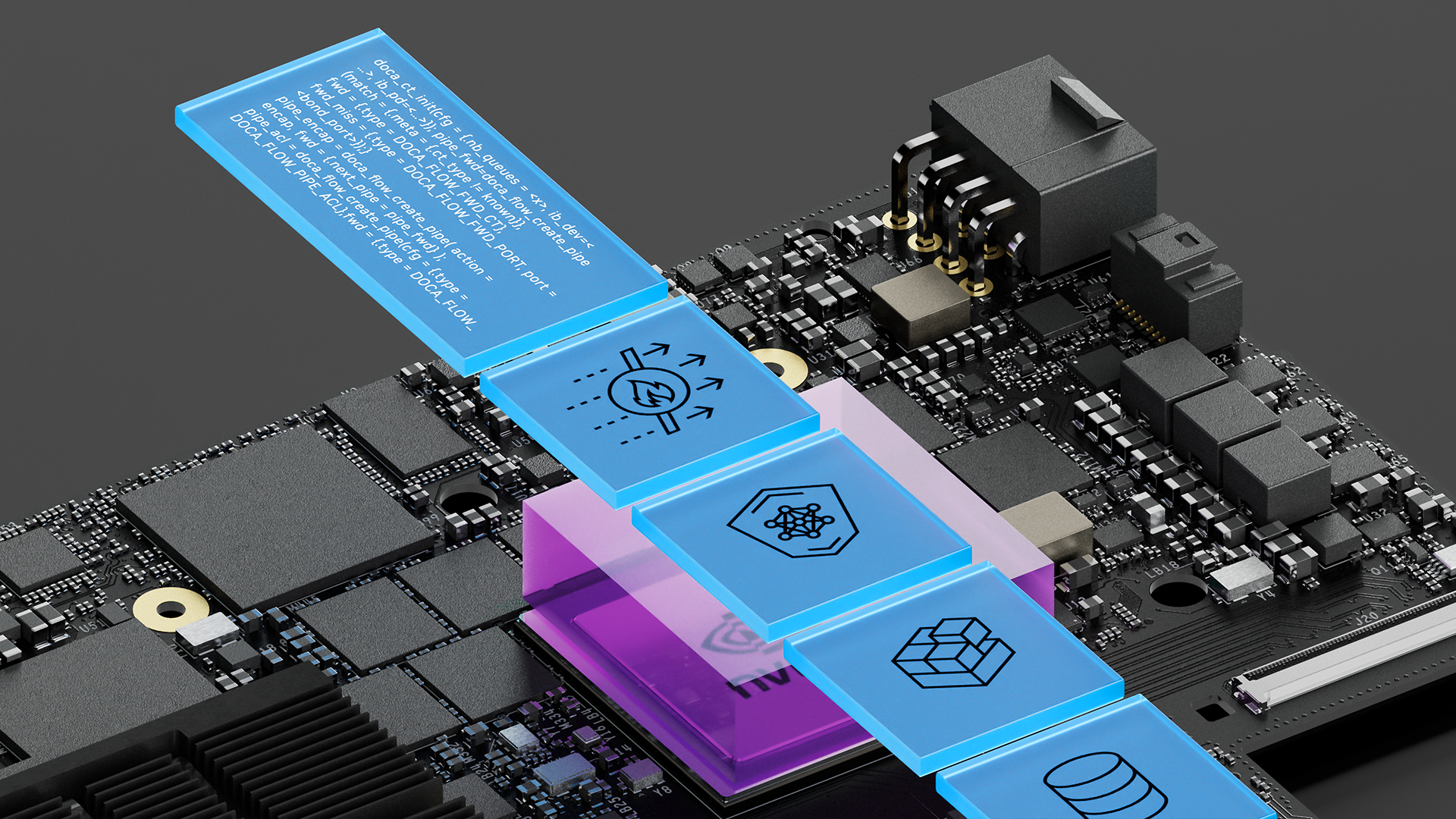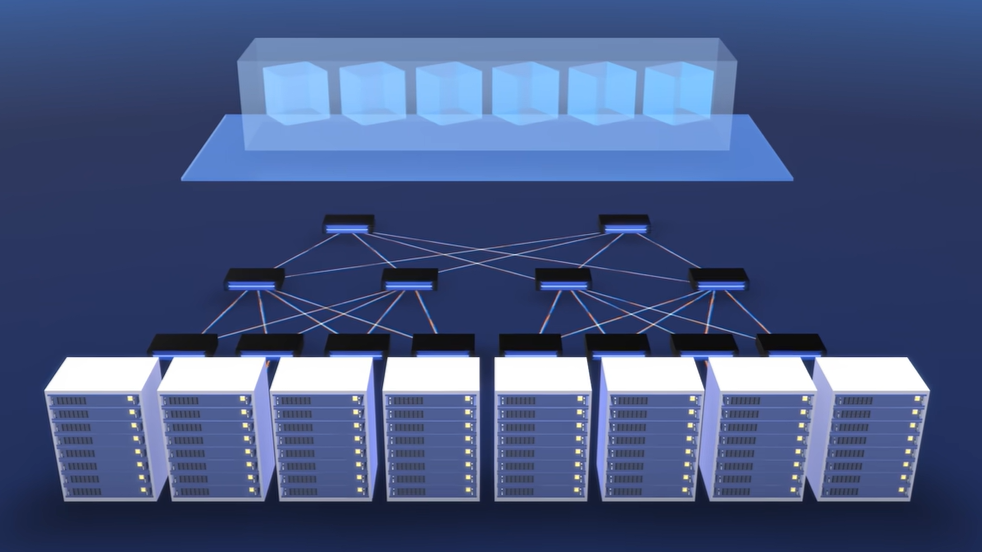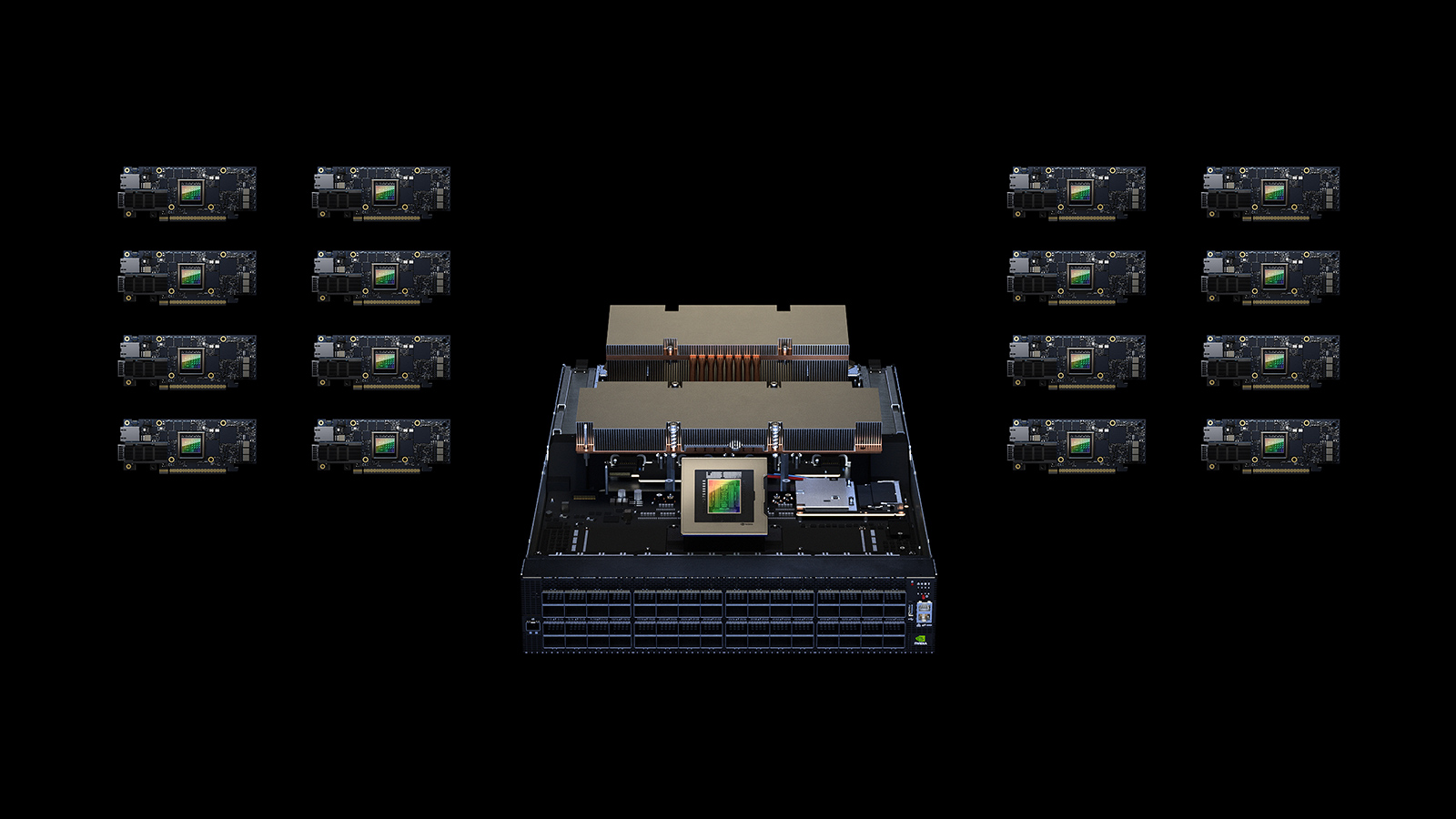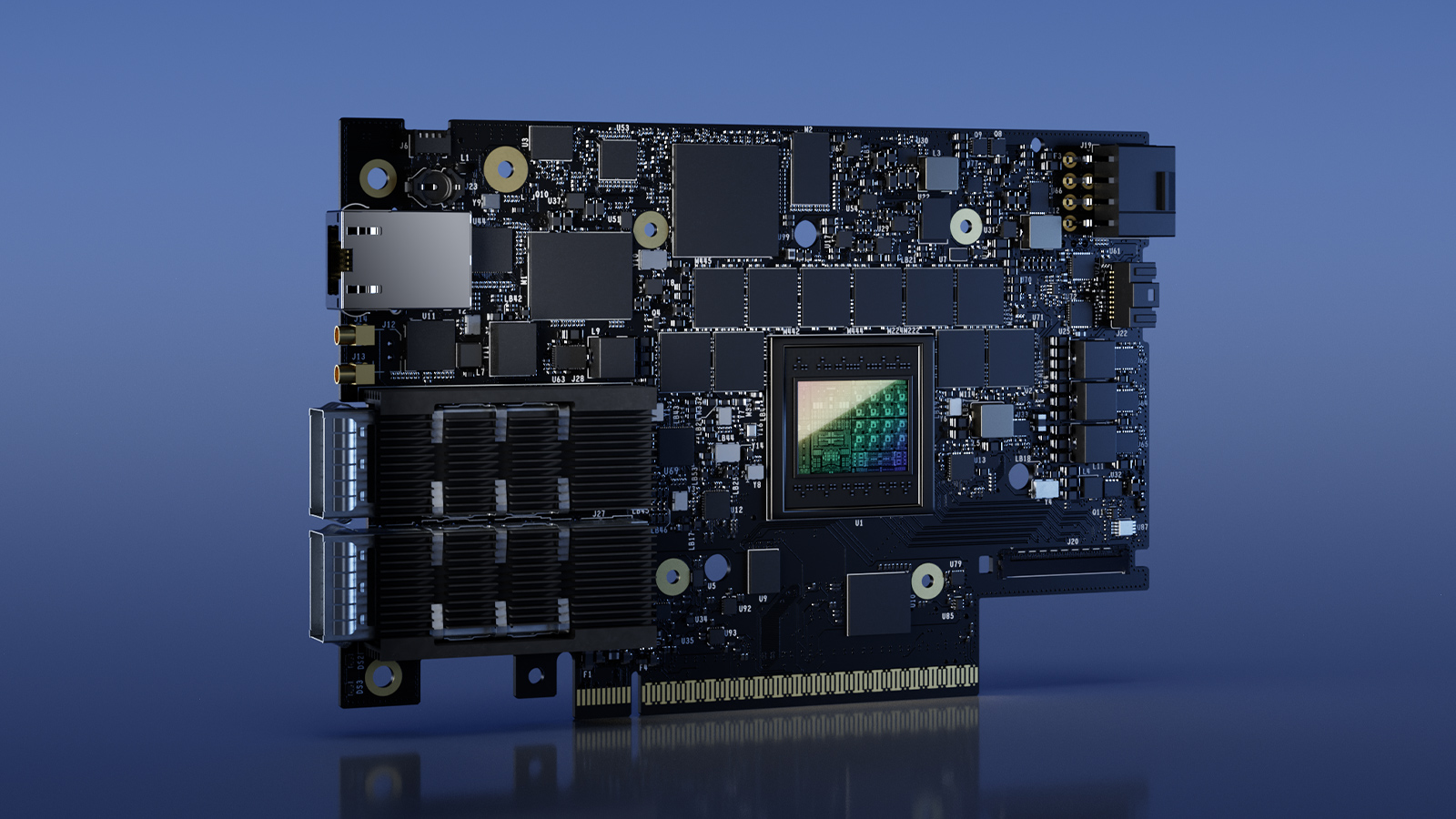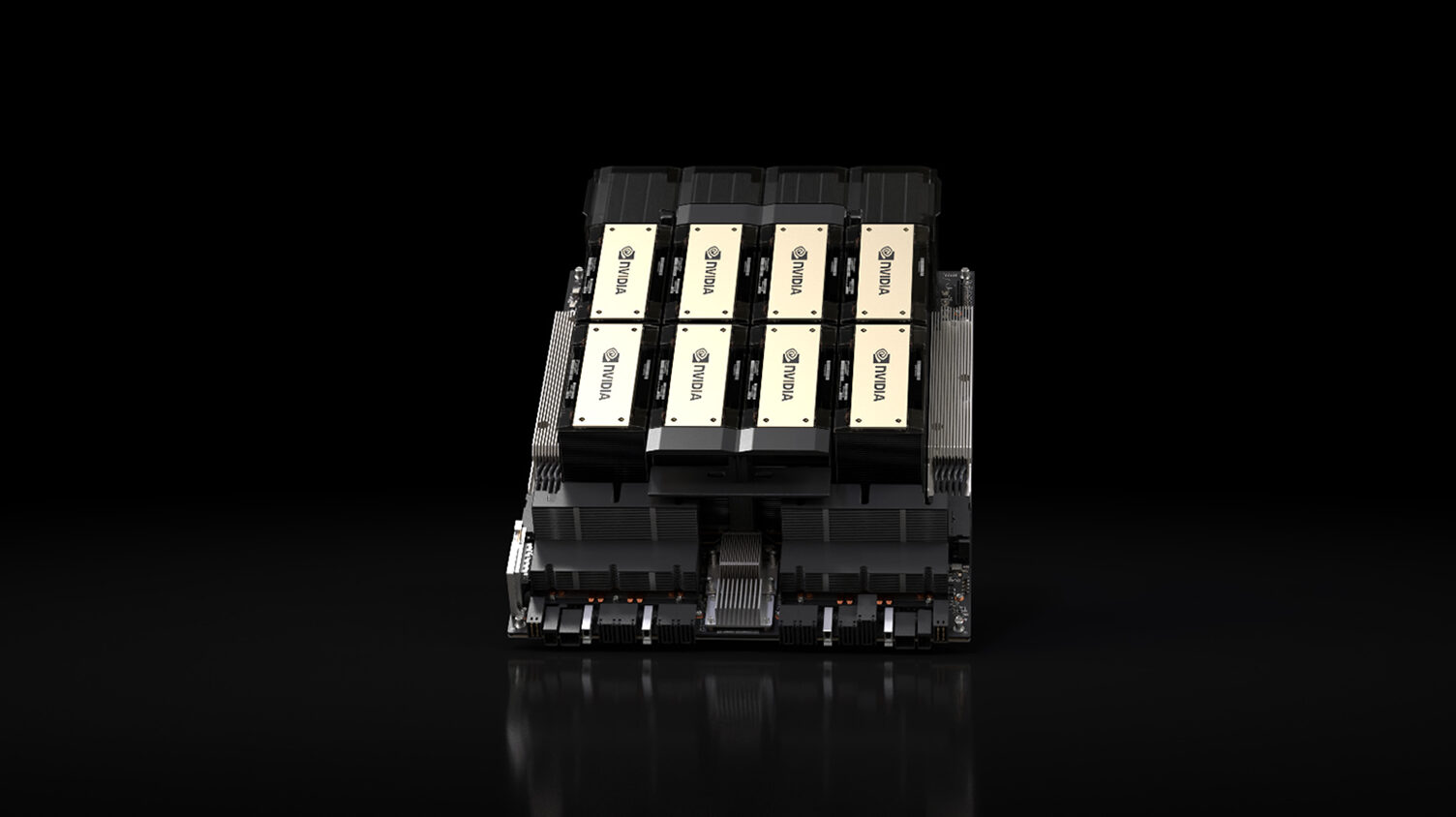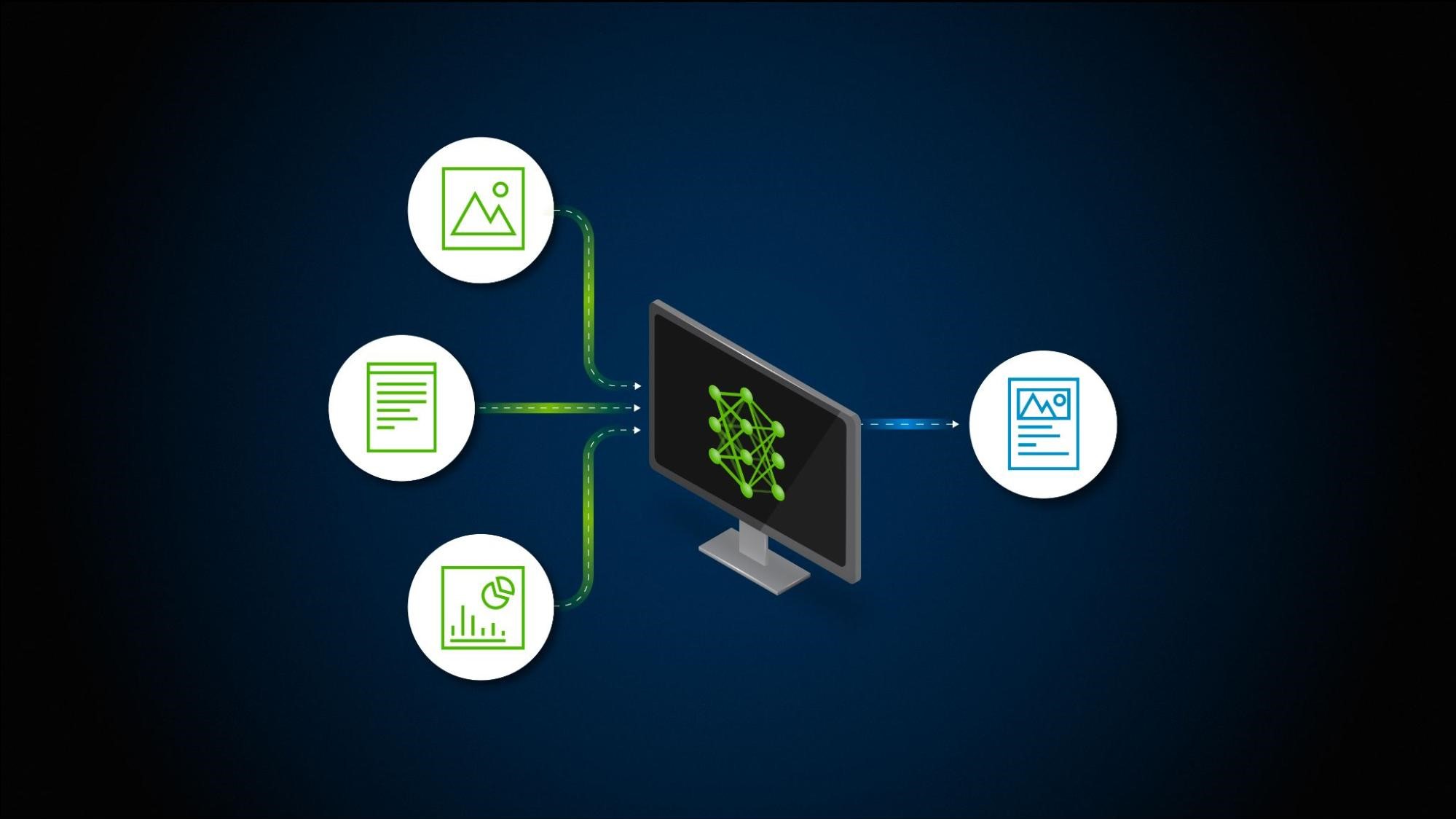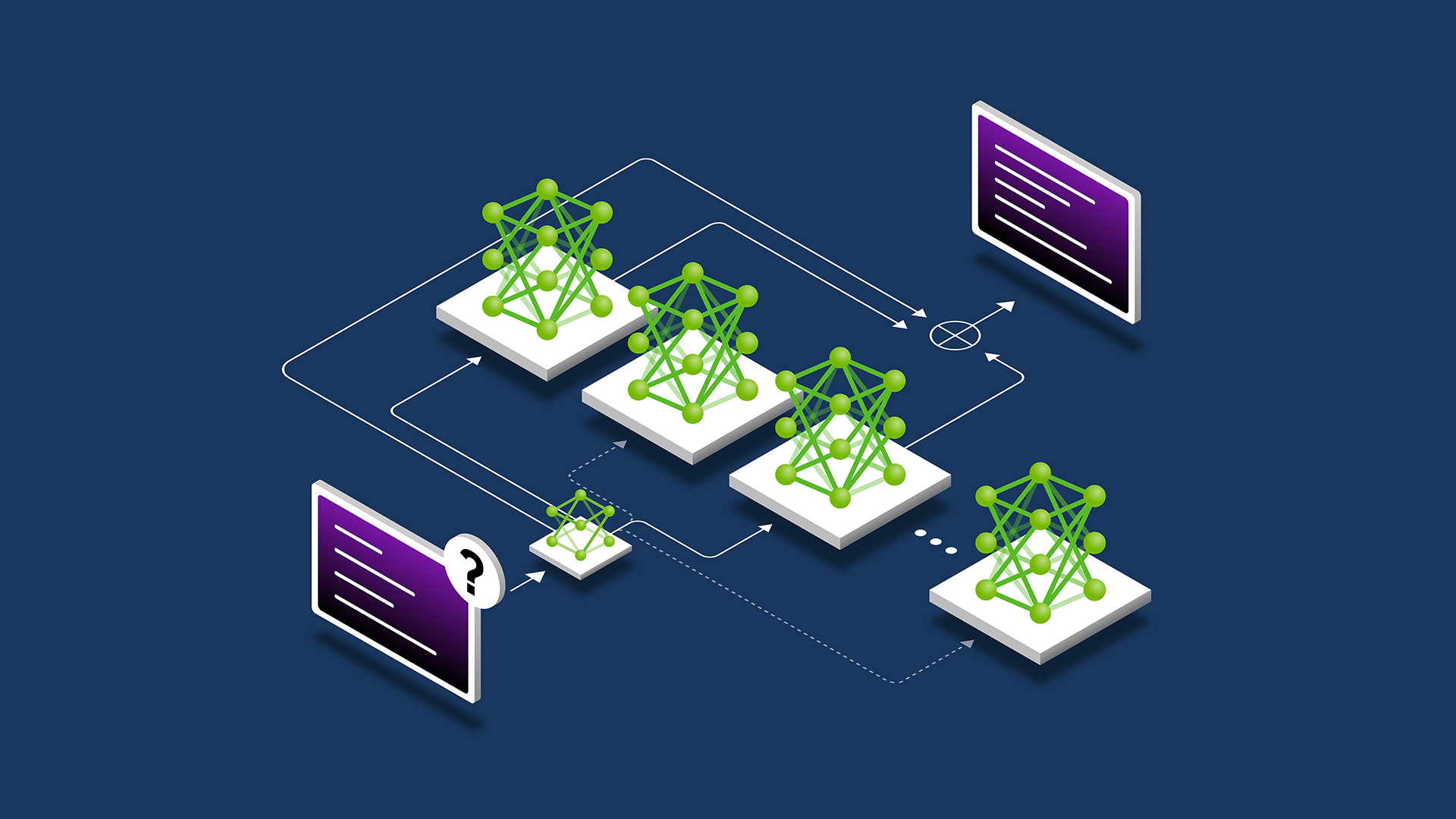Traditional cloud data centers have served as the bedrock of computing infrastructure for over a decade, catering to a diverse range of users and applications. However, data centers have evolved in recent years to keep up with advancements in technology and the surging demand for AI-driven computing. This post explores the pivotal role that networking plays in shaping the future of data centers and facilitating the era of AI.
Specialized data centers: AI factories and AI clouds
Two distinct classes of data centers are currently emerging: AI factories and AI clouds. Both of these are tailored to meet the unique demands of AI workloads, which are characterized by their reliance on accelerated computing.
AI factories are designed to handle massive, large-scale workflows and the development of large language models (LLMs) and other foundational AI models. These models are the building blocks with which more advanced AI systems are constructed. To enable seamless scaling and efficient utilization of resources across thousands of GPUs, a robust and high-performance network is imperative.
AI clouds extend the capabilities of traditional cloud infrastructure to support large-scale generative AI applications. Generative AI goes beyond conventional AI systems by creating new content, such as images, text, and audio, based on the data it’s been trained on. Managing AI clouds with thousands of users requires advanced management tools and a networking infrastructure that can handle diverse workloads efficiently.
AI and distributed computing
AI workloads are computationally intensive, particularly those involving large and complex models like ChatGPT and BERT. To expedite model training and processing vast datasets, AI practitioners have turned to distributed computing. This approach involves distributing the workload across multiple interconnected servers or nodes connected through a high-speed, low-latency network.
Distributed computing is pivotal for the success of AI, and the network’s scalability and capacity to handle a growing number of nodes is crucial. A highly scalable network enables AI researchers to tap into more computational resources, leading to faster and improved performance.
When crafting the network architecture for AI data centers, it’s essential to create an integrated solution with distributed computing as a top priority. Data center architects must carefully consider network design and tailor solutions to the unique demands of the AI workloads they plan to deploy.
NVIDIA Quantum-2 InfiniBand and NVIDIA Spectrum-X are two networking platforms specifically designed and optimized to meet the networking challenges of the AI data center, each with its own unique features and innovations.
InfiniBand drives AI performance
InfiniBand technology has been a driving force behind large-scale supercomputing deployments for complex distributed scientific computing. It has become the de facto network for AI factories. With ultra-low latencies, InfiniBand has become a linchpin for accelerating today’s mainstream high-performance computing (HPC) and AI applications. Many crucial network capabilities required for efficient AI systems are native to the NVIDIA Quantum-2 InfiniBand platform.
In-network computing, driven by InfiniBand, integrates hardware-based computing engines into the network. This offloads complex operations at scale and utilizes the NVIDIA Scalable Hierarchical Aggregation and Reduction Protocol (SHARP), an in-network aggregation mechanism. SHARP supports multiple concurrent collective operations, doubling data bandwidth for data reductions and performance enhancements.
The InfiniBand adaptive routing optimally spreads traffic, mitigating congestion and enhancing resource utilization. Directed by a Subnet Manager, InfiniBand selects congestion-free routes based on network conditions, maximizing efficiency without compromising order of packet arrival.
The InfiniBand Congestion Control Architecture guarantees deterministic bandwidth and latency. It uses a three-stage process to manage congestion, preventing performance bottlenecks in AI workloads.
These inherent optimizations empower InfiniBand to meet the demands of AI applications, ultimately driving superior performance and efficiency.
Navigating Ethernet for AI deployments
Deploying Ethernet networks for an AI infrastructure requires addressing needs specific to the Ethernet protocol. Over time, Ethernet has incorporated an expansive, comprehensive, and (at times) complex feature set that caters to a huge range of network scenarios.
As such, out-of-the-box or traditional Ethernet isn’t explicitly designed for high performance. AI clouds that use traditional Ethernet for their compute fabric can only achieve a fraction of the performance that they would achieve with an optimized network.
In multi-tenant environments where multiple AI jobs run simultaneously, performance isolation is critical to prevent further degradation of performance. If there is a link fault, the traditional Ethernet fabric can cause the cluster’s AI performance to drop by half. This is because traditional Ethernet has primarily been optimized for everyday enterprise workflows and isn’t designed to meet the demands of high-performance AI applications that rely on the NVIDIA Collective Communications Library (NCCL).
These performance issues are due to factors inherent to traditional Ethernet, including:
- Higher switch latencies, common across commodity ASICs
- Split buffer switch architecture, which can lead to bandwidth unfairness
- Load balancing that is suboptimized for the large flows generated by AI workloads
- Performance isolation and noisy neighbor issues
The Spectrum-X networking platform solves these issues and more. Spectrum-X builds on the standard Ethernet protocol with RDMA over Converged Ethernet (RoCE) Extensions, enhancing performance for AI. These extensions leverage the best practices native to InfiniBand and bring innovations such as adaptive routing and congestion control to Ethernet.
Spectrum-X is the only Ethernet platform that delivers the high effective bandwidth and performance isolation needed for multi-tenant generative AI clouds, enabled due to Spectrum-4 working in close coordination with NVIDIA BlueField-3 DPUs.
Summary
The era of AI is here, and the network is the cornerstone of its success. To fully embrace the potential of AI, data center architects must carefully consider network design and tailor these designs to the unique demands of AI workloads. Addressing networking considerations is key to unlocking the full potential of AI technologies and driving innovation in the data center industry.
NVIDIA Quantum InfiniBand is an ideal choice for AI factories, thanks to its ultra-low latencies, scalable performance, and advanced feature sets. NVIDIA Spectrum-X, with its purpose-built technology innovations for AI, offers a groundbreaking solution for organizations building Ethernet-based AI clouds.
To learn more about AI performance demands and network requirements, see the Networking for the Era of AI whitepaper. Join the conversation in the NVIDIA Developer Infrastructure and Networking Forum.

